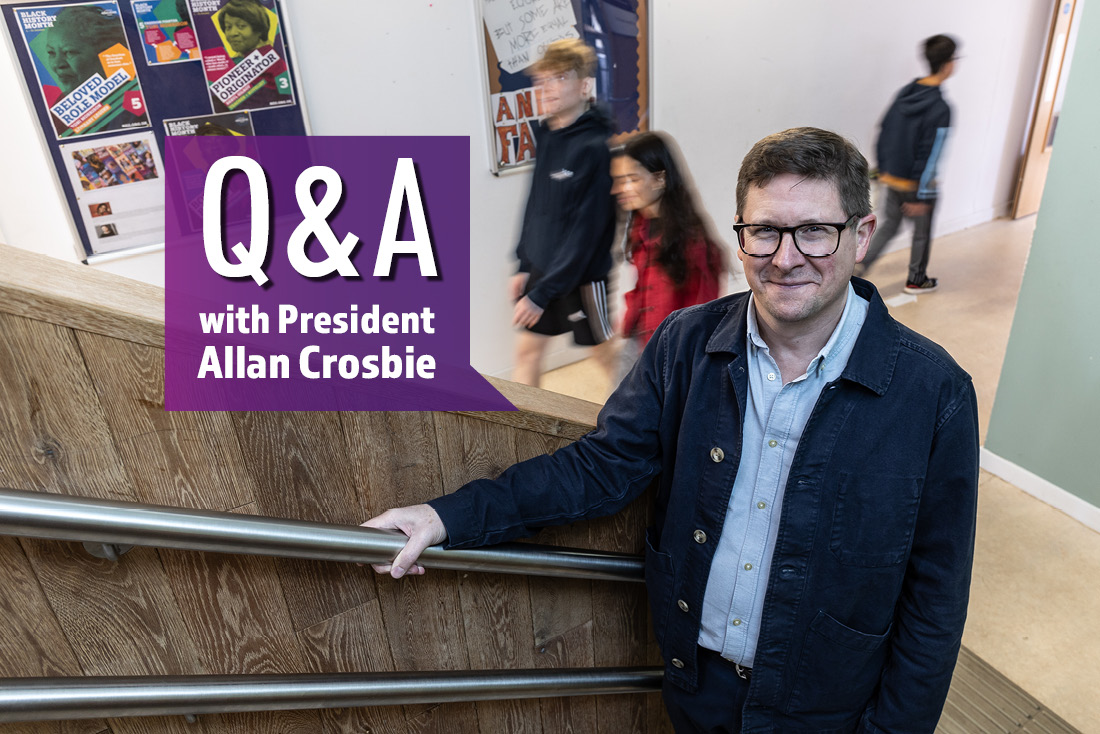
Can you tell us a little about your teaching career and involvement in the EIS?
Following my Undergraduate Degree in English, I undertook a one-year Masters in 1990-91 at the University of Notre Dame, Indiana, in what was then a very new academic field: Peace Studies. Learning about things such as Education for Peace, Human Rights Education, Restorative Practices and Peer Mediation, all of which were just starting to emerge in schools at that time, led me to teaching.
Already steeped in the ideas of thinkers like Paolo Freire, I worked in El Salvador in 1992 in a community of repatriated refugees. The families had fled during the civil war and the teenagers had spent their childhoods in Nicaragua.
I taught them some English and worked with their drama group – they used to perform with techniques such as mime and narration to tell the story of the war and of their return home – but by the end of the year I realised I was learning much more from them than they were from me, and I knew that any kind of Freirean practice I was ever going to manage was going to be much more relevant and useful back home in Scotland.
I’ve been an English teacher in Edinburgh ever since, trying to use literature as a means of opening minds and changing the world, a tool to help young people understand social justice, political literacy and themselves as agents of that change.
And of course, those values lie at the heart of my EIS activism. I’ve been very active locally and nationally since 2011. The comradeship and solidarity I’ve experienced in all the roles I’ve had within the Union have been inspirational, and I feel privileged to have been part of a communal endeavour to turn the Union into the vibrant, organising, campaigning movement at the heart of Scottish education that it is today.
It’s a great honour to have been elected as President, but it’s the 65,000 members who give us our strength and who give our young people the skills and values – and hope – that they’re going to need in a very uncertain world.
This is a challenging time for the public sector – what do you see as the most pressing issue for the EIS this year?
There are two, intertwined: workload and wellbeing. We’re working an average of 11 hours every week above our contracted 35 hours. That unpaid extra labour just to survive in the job has the monetary equivalent of every teacher at the top of the maingrade pay scale subsidising their local authority £15,229 every year (this is calculated before the new 2024 pay rise), and of course, that workload has a huge cost on our wellbeing: in the past four years, days lost to absences caused by mental ill-health among school staff rose by 57%. We can’t go on like this.
Workload and wellbeing pressures would be eased – not solved, but eased – if the Scottish Government kept its manifesto pledge to cut teachers’ contact time to 21 hours and if it guaranteed the additional non-contact time for marking and preparation only.
This now can’t happen before the end of this parliamentary term, but it should remain a top EIS aim within the Stand Up for Quality Education campaign because it’s something that could be put in place over the longer term. Maintaining pressure on the Government on this issue is essential – the 2026 Holyrood election is just around the corner.
The long-running pay dispute in FE has now come to an end – what lessons have been learned?
I’m so glad that our lecturers have won their pay award. They have suffered for years during the cost-of-living crisis without a pay rise since 2021, and I know they are relieved to get off the picket lines now and back into lecture rooms.
But another key lesson to learn from the dispute is that the Scottish Government can be shamed into taking action.
The pay dispute may have come to an end, but it’s very clear that our comrades in EIS-FELA will continue to be at the frontline of a war waged by neoliberalism against education and educators.
A key lesson we have to learn is that the FE sector is a case study in the defund and privatise project. The way courses are cut, the influence that employers and businesses have over the curriculum, the chronic underfunding by Government, the lack of Fair Work practices, the awful Governance arrangements, all of it will still have to be opposed.
But another key lesson to learn from the dispute is that the Scottish Government can be shamed into taking action. They stepped in with extra cash at the last minute because of the way EIS-FELA honed their campaign during the UK election against the iniquity of ‘deeming’ – which is when employers meet action short of strike with 100% deduction in wages – and targeted SNP politicians on that issue.
Deeming in the public sector, when so much of their electioneering had been based on standing up for working people, was not acceptable to the Scottish Government, and the college employers had to end it, and repay any deductions taken, as a key part of the deal.
The EIS nationally will remember this if action short of strike becomes necessary in any other disputes we may have to declare in the future.
Cuts to education continue to be a threat – what is the EIS doing to fight back against this?
This is such a hard question to answer succinctly because everything is so interconnected. I think it boils down to this; everything we’re fighting against in the Stand Up for Quality Education campaign stems from austerity, and everything we’re fighting for will require austerity to end and for massive new investment to be pumped into the system.
Austerity is a failed policy, we all know it, and the new Labour Government must end it by introducing radical wealth tax reforms and super-charging investment in public services. We already lobby on these issues at UK level, through our work at the TUC, and we could start to contact the new Labour MPs throughout Scotland about the need to end austerity and consequently increase the block grant to the Scottish Parliament.
But of course, the Scottish Government also has to shoulder some of the blame: imposing a freeze on Council Tax, and failing to implement tax changes recommended by the STUC, which could bring £3.3 billion every year into Scottish public services, mean that local authorities remain starved of cash and will impose more cuts.
Our comrades in Glasgow EIS Local Association are already showing us the way to fight back against these. They are currently the vanguard in our campaign and we have a lot to learn from them, as we do from EIS-FELA.
I think every Local Association has to consider how to build and organise towards declaring disputes. Cuts to education budgets will mean fewer teachers and support staff, more violence and aggression in classrooms, more precarity for newer teachers, more unmet ASN needs, more workload for teachers and more harms to wellbeing for everyone. We have to stop the cuts.
But this will mean taking local action. Of course, there will be support from the national body, but these campaigns will be organised, coordinated and run at local level. This will be hard, and it will require every EIS member in every branch to be actively involved, but we can learn so much from Glasgow and EIS-FELA. “No Ifs, No Buts; No Education Cuts!”
Tell us one thing about yourself that might surprise us.
I’m an outlaw. I was born in Bermuda and lived there until I was about five. A few months after I turned 18, my Godparents who still lived on the island sent me a clipping from a local newspaper. “The following undersigned must report immediately to their nearest police station,” the extract began, “in order to comply with Bermuda’s military service requirements.” Among a long list of names was mine!
If I were ever to return, I believe I would be arrested at the airport. Am I the first President of the EIS to be a conscientious objector, I wonder? I doubt it somehow, and my predecessor won’t have been able to treat it all as lightly as I am. That Peace Studies course still has much to teach me…
